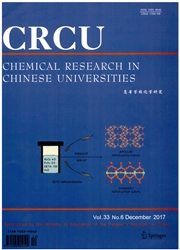

 中文摘要:
中文摘要:
改进热点紧张是在散布的提高表面的拉曼(重量的单位) 的一个关键问题。bowtie nanoantenna (BNA ) 是过去常集中光能进 nanoscale 卷并且生产强壮的热点的一台有效设备。Nanosphere 平版印刷术(NSL ) 是一种大区域、便宜的技术生产 BNA 数组;然而,制作 NSL 的 BNA 的 SERS 活动是有限的。在这份报纸,我们在场由修改他们的几何学改进常规制作 NSL 的 BNA 的 SERS 活动的一个简单方法。新配置被称为银涂的提高的 bowtie nanoantenna (SCEBNA ) 。SCEBNA 由于闪电杆效果,联合的回声,和 plasmonic FabryP 的形成的综合贡献在差距洞执行集中的近地的改进 ? 楷桴吗?
 英文摘要:
英文摘要:
Improving hot-spot intensity is a key issue in surface-enhanced Raman scattering (SERS). The bowtie nanoantenna (BNA) is an effective device used to concentrate light energy into a nanoscale volume and produce strong hot spots. Nanosphere lithography (NSL) is a large-area and low-cost technique to produce BNA arrays; however, the SERS activity of NSL-fabricated BNAs is limited. In this paper, we present a simple method to improve the SERS activity of conventional NSL-fabricated BNAs by modifying their geometry. The new configuration is termed "silver-coated elevated bowtie nanoantenna" (SCEBNA). SCEBNAs perform intensive near-field enhancement in the gap cavities owing to the integrated contribution of the "lightning rod" effect, resonance coupling, and the formation of the plasmonic Fabry-Perot cavity. Experimental measurements and finite-difference time-domain simulations revealed that the hot-spot intensity and the substrate enhancement factor can be optimized by adjusting the silver thickness. The optimal sample has the capability of trace-amount detection with fine reproducibility.
 同期刊论文项目
同期刊论文项目
 同项目期刊论文
同项目期刊论文
 期刊信息
期刊信息
